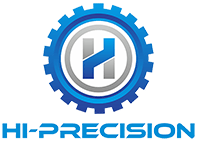This article will use simple graphics and text to introduce how to reduce CNC milling costs by optimizing product appearance, including processing suggestions for fillets, chamfers, settings, drilling and other aspects. I hope you will definitely have a better understanding of CNC after reading this!

As we all know, the simpler the product design, the lower the processing cost. Therefore, before starting your project for formal production, you should remove unnecessary designs from the product’s appearance.
Examples of Defective Parts
The following are poorly designed parts, which have a three sided shape and require three rounds of clamping to be made. In addition, their inner rounded corners are relatively small and not easy to machine, and the milling speed is also slow, which may require the assistance of other special tools. And all edges and corners are rounded, which will require 3D surface processing or specialized tools to achieve.

Optimize Bad Parts
Delete all top and bottom fillets, and increase the diameter of the inner fillets. If possible, it is recommended to reduce the number of machine runs and turn the original holes on the sides into slots that can be machined in the first run.

In fact, there are many techniques to save CNC milling costs by optimizing the appearance of your product:
- Add radius to inner vertical edges. Add a radius that is at least one-third of the cavity depth—the bigger, the better. All internal edges use the same radius, eliminating the need to change tools. At the bottom of the cavity, use a smaller radius (0.5 or 1 mm) or no radius at all;
- Control cavity depth. Machining deep cavities on a CNC mill can greatly impact the cost of CNC milling the part because of the large amount of material that must be removed. This is time consuming and wasteful;
- Avoid thin-walled designs. Problems such as deformation or fracture are prone to occur when CNC milling thin-walled parts, and the accuracy of the parts is difficult to control due to vibration. This not only increases the difficulty of CNC milling, but also increases the cost of CNC milling;
- Avoid long threads. Long threads increase the cost of CNC milling the part. Thread designs that are too long may require special milling tools;
- Avoid non-standard hole sizes. When CNC milling non-standard size hole designs, additional processing steps or tools may be required, which will definitely increase CNC milling costs;
- Don’t abuse tolerances. Although tight tolerances produce high-quality parts, tight tolerances also increase CNC milling costs. We recommend that you use standard tolerances, which are sufficient for most non-high-precision products.
- Avoid complex geometric shapes. Complex geometries not only require custom fixtures, but also require a variety of equipment to be configured to complete manufacturing;
- The aspect ratio cannot be too large. Parts with too large an aspect ratio are difficult to machine accurately and can be difficult to machine;
- Choose materials that are cheap and can be cut. Materials should be selected based on the advice of CNC experts. Our CNC machinists will select the most appropriate CNC machining materials based on your project needs;
- Avoid unnecessary surface preparation. Anodizing, electroplating and other surface treatment processes make your products look more beautiful and more durable, but they will also increase the CNC quotation.
The above briefly introduces the methods of optimizing product appearance design to reduce CNC milling costs. To learn more about reducing CNC machining costs, please bookmark our website.
